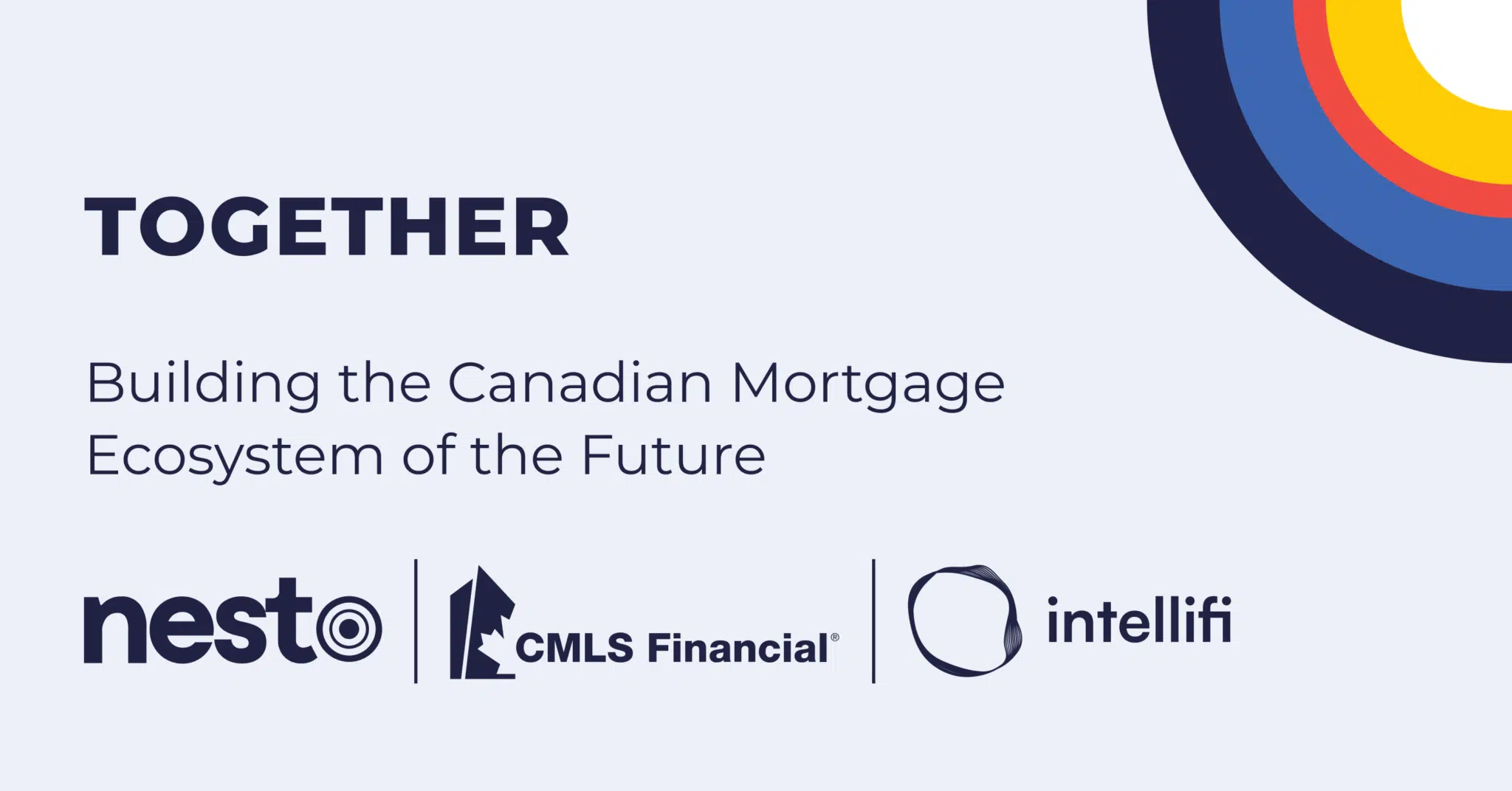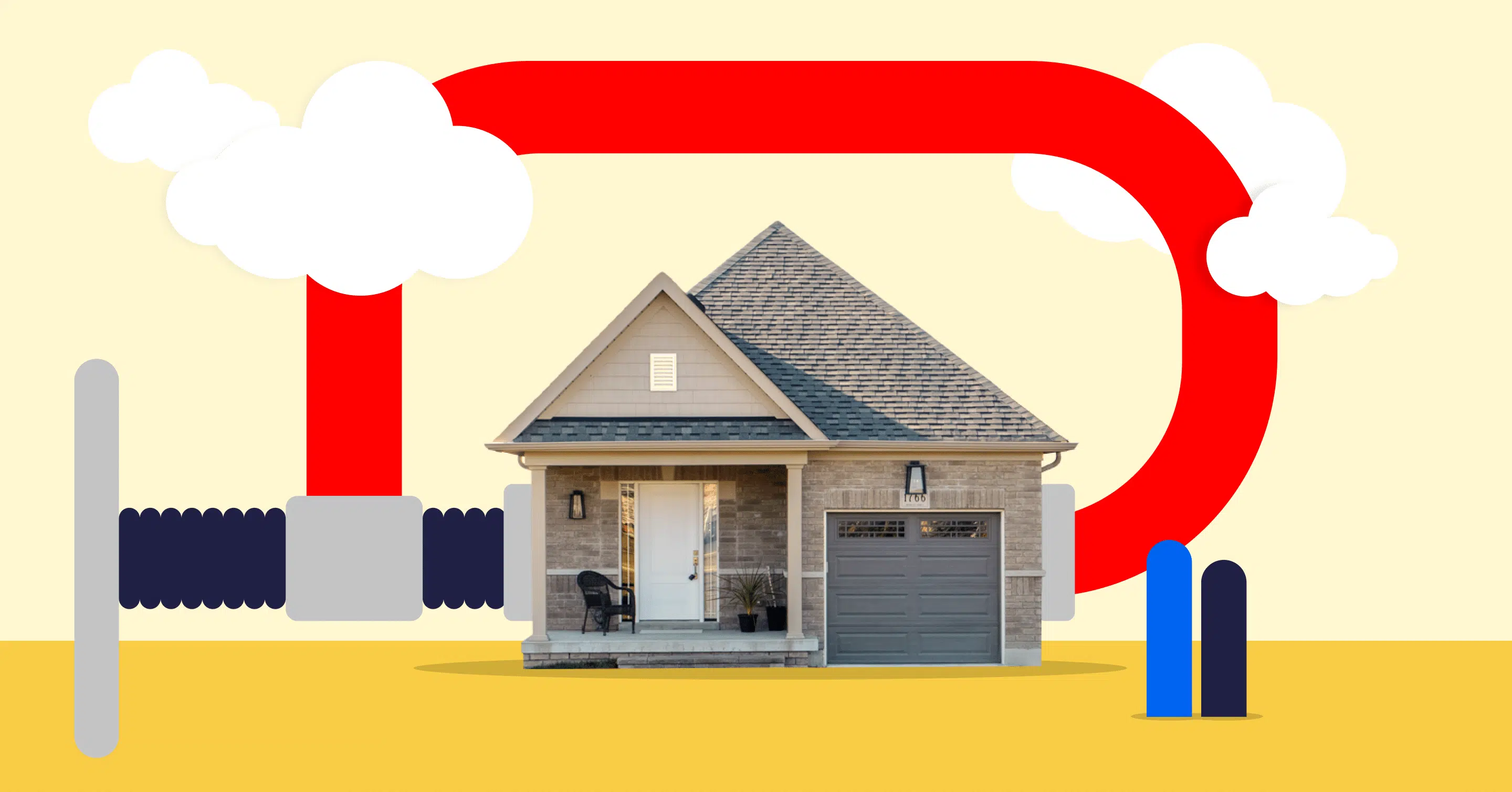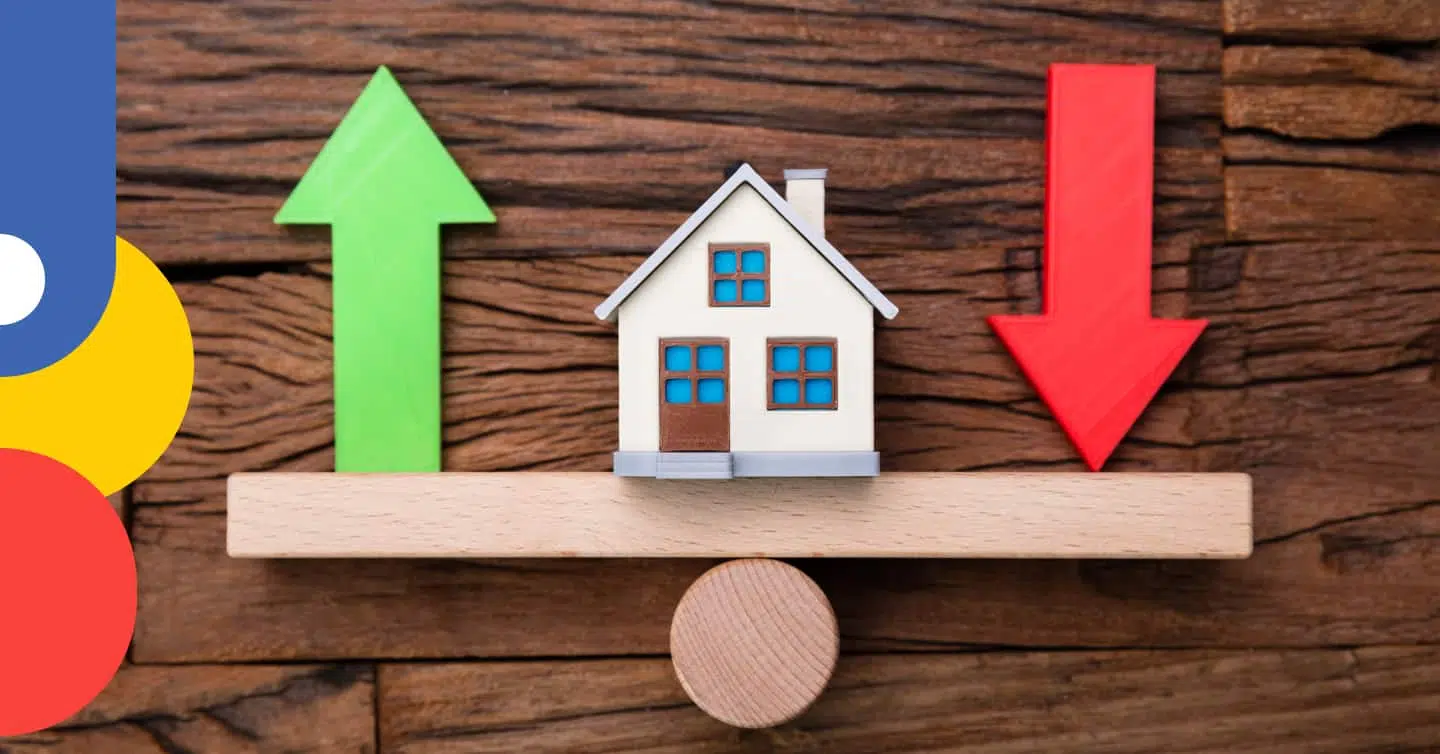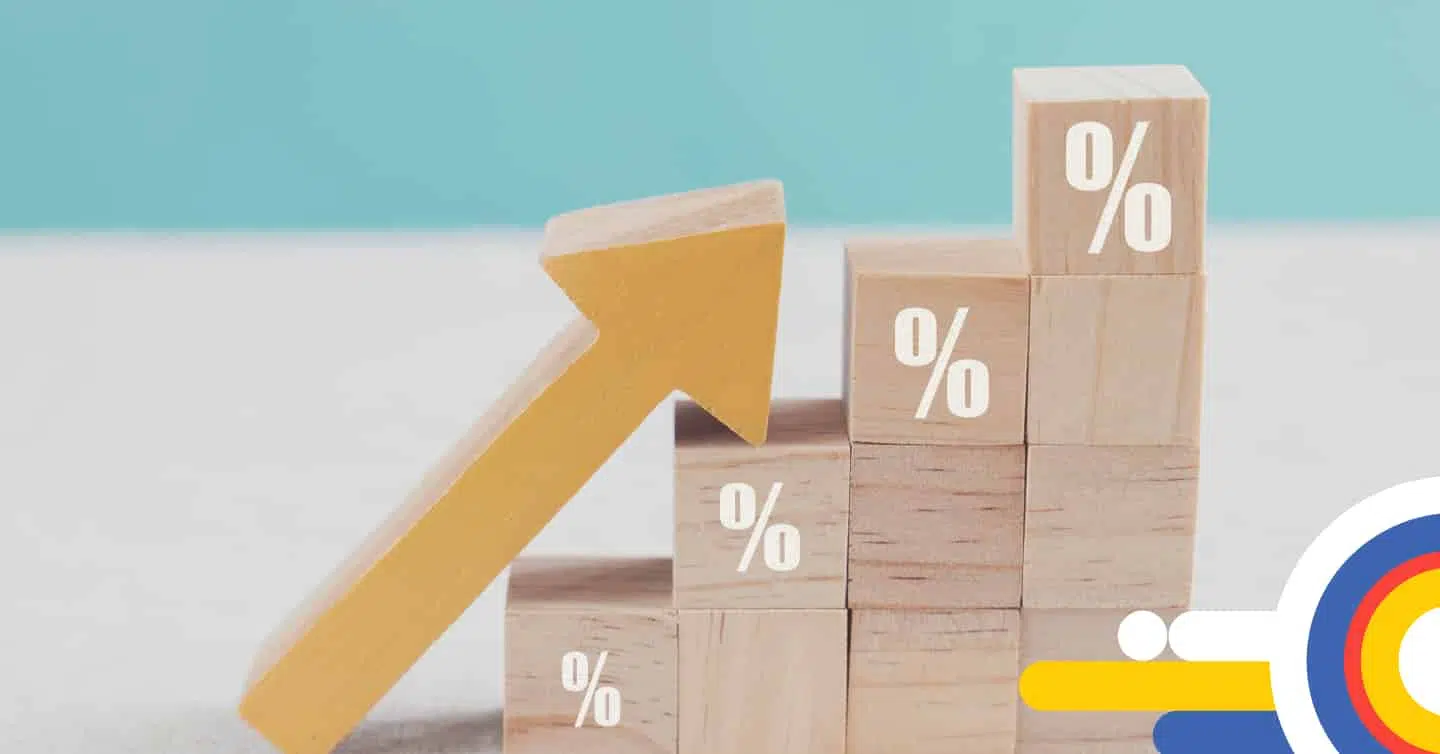Canada Capital Gains Tax Calculator 2025
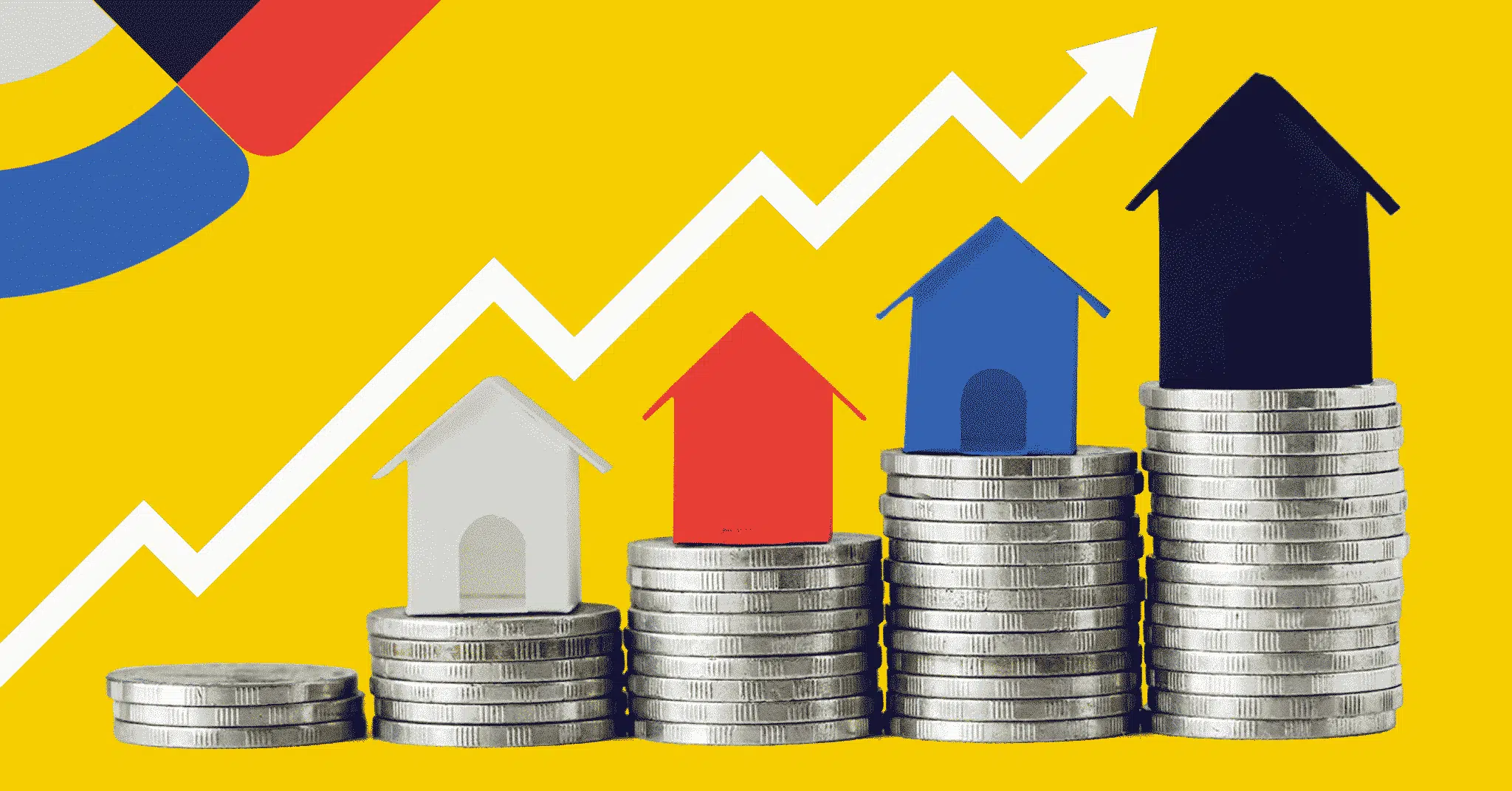
Table of contents
Are you wondering what capital gains taxes are? Are you curious if there are any exemptions to the rule? In this blog post, we outline everything you need to know about capital gains in Canada.
Key Takeaways
- In Canada, if you sell an investment at a higher price than you paid, you’ll have to add the capital gains realized to your income.
- Capital gains tax rates depend on your province since they are based on your personal tax bracket.
- There are several capital gains tax exemptions to be aware of, including those on your principal residence.
What Is a Capital Gain in Canada?
A capital gain occurs when you sell, or are considered to have sold, a capital property for more than the total of its adjusted cost base and the expenses incurred in selling the property.
Some common types of capital property are
- cottages,
- land,
- buildings and equipment used in a business or rental operation,
- and securities such as stocks, bonds and units of a mutual fund trust.
A key thing to note: Capital property doesn’t include trading assets of a business, such as inventory.
What Is a Capital Gains Tax in Canada?
Note: The proposed capital gains tax change, which would increase the inclusion rate from 50% to 66.67% for capital gains above $250,000 for individuals and on all gains realized by corporations and most types of trusts, has been deferred until January 1st, 2026. For the 2024 and 2025 tax years, capital gains will remain at 50% of all profits realized from the sale of assets.
Amendments to the Income Tax Act on June 25th, 2024, change how capital gains are taxed in Canada. Capital gains tax in Canada for individuals will realize 50% of the value of any capital gains as taxable income for amounts up to $250,000. Any amount above $250,000 will realize capital gains of ⅔ or 66.67% as taxable income. For corporations and trusts, the capital gains tax will increase from ½ (50%) to ⅔ (66.67%) on the realized capital gain.
In other words, if you sell an investment at a higher price than you paid (realized capital gains), you’ll have to add 50% (inclusion rate) of the capital gains to your income for amounts up to $250,000. If you sell an investment and realize a capital gain of over $250,000, the remaining amount above $250,000 will have an inclusion rate of 66.67%. The inclusion rate of 66.67% applies to the entire realized capital gain for corporations and trusts.
The realized capital gain is then taxed at your personal or corporate marginal tax rate based on your province’s tax brackets. (See capital gains tax rates by province below.)
How Do You Calculate Tax on Capital Gains?
To calculate a capital gain, you first need to know the proceeds of the disposition, the adjusted cost base (ACB), and the expenses incurred to sell the disposition.
Not sure what each of those terms mean? Allow us to provide you with clarity!
- Adjusted cost base (ACB)
The adjusted cost base for real estate is the cost of a property plus any expenses to acquire it, such as commissions and legal fees. The cost of capital property is its actual or deemed cost, depending on the property type and how you acquired it. It also includes capital expenditures, such as the cost of additions and improvements to the property. You can’t add current expenses, such as maintenance and repair costs, to the cost base of a property.
- Proceeds of disposition
The proceeds of disposition is the amount you received, or will receive, for your property. In most cases, this refers to the property’s sale price, including any compensation you received for property that has been destroyed, expropriated or stolen.
- Expenses
Expenses are the amounts you incur to sell a capital property. You can deduct expenses such as fixing up expenses, finders’ fees, commissions, brokers’ fees, surveyors’ fees, legal fees, transfer taxes, and advertising costs from your proceeds of disposition. You cannot reduce any of your other income by claiming these expenses.
To calculate a capital gain on a sale made in foreign currency, you need to convert the proceeds of the disposition to Canadian dollars using the exchange rate in effect at the time of sale. Convert the ACB to Canadian dollars using the exchange rate in effect when the disposition was acquired, and convert the expenses incurred to sell the disposition to Canadian dollars using the exchange rate in effect when the expense was incurred.
Note: The exchange rate should be the one stated on your receipt as proof from the date of sale. Or, if not stated, the rate should correspond to that used at the Bank of Canada (if the exact date is not available, then those referenced by the CRA on an annual basis).
Capital gains are calculated as follows:
Proceeds of disposition – (ACB + Expenses) = Capital Gains
For example, you are an individual who has just sold your vacation property that you originally purchased for $200,000. The sale was completed after June 25th, 2024, for $600,000. The new inclusion rate will apply to the portion of capital gains over $250,000. Assume you had $5,000 in legal and other expenses to include in the adjusted cost base and had an additional $10,000 in expenses incurred when you sold the property. You can calculate the capital gains as follows:
$600,000 – ($200,000+$5,000+10,000) = $385,000
Since the full capital gain is not taxable, you can calculate the inclusion rate, the amount you will need to claim as income at tax time as follows:
$250,000 x 0.5 = $125,000
$135,000 x 0.6667 = $90,004.50
$125,000+$90,004.50 = $215,004.50
You must add $215,004.50 to your income at tax time to be taxed at your marginal tax rate.
Important: It’s always wise to speak with an income tax specialist before filing your taxes, particularly in a year when you’ve realized capital gains.
What Are Canada Capital Gains Tax Exemptions?
In some situations, you can be exempt from paying capital gains taxes.
Lifetime Capital Gains Exemption (LCGE)
Also commonly known as the capital gains deduction limit, Canadian residents are entitled to a cumulative lifetime LCGE on net gains realized when they dispose of eligible properties. The capital properties eligible for the LCGE include qualified small business corporation shares (QSBCS) and qualified farm or fishing property (QFFP).
Effective June 25th, 2024, the lifetime capital gains exemption for qualified small business shares and farming and fishing property will increase to $1.25 million and indexed to inflation in subsequent years.
Principal Residence Exemption
When you sell a property, you may be exempt from paying capital gains tax if the property was your principal residence, though you will still need to report the sale of the property on your taxes. You’re only allowed to have one principal residence at a time, and if you have a spouse, there can only be one principal residence between you.
If there was a period when the property was not your principal residence during your time of ownership, you wouldn’t be eligible to receive the full tax exemption amount. In this case, the exemption will be calculated based on the number of tax years that you held the property as your principal residence.
Selling a home you have owned for less than a year is considered property flipping, with the capital gains treated as business income. This would make the property, even if it were your principal residence during that time, ineligible for the principal residence exemption. Some exclusions to this rule apply if disposing of the property within a year was due to an event such as death, breakdown of marriage, loss of employment, etc.
Exemptions on Capital Gains Tax for Donations
Donating certain types of capital property to a registered charity or other qualified organization may exempt you from paying capital gains tax on any capital gains realized.
The assets eligible for the exemption when donated include
- shares of stock of a mutual fund corporation,
- a unit of mutual fund trust,
- an interest in a related segregated fund trust,
- a prescribed debt obligation,
- certified ecologically sensitive land
- A share, debt obligation, or right listed on a designated stock exchange.
Qualified donees in Canada include but are not limited to
- registered charities,
- registered Canadian amateur athletic associations,
- Registered national arts service organizations,
- Registered housing corporations resident in Canada that are set up to provide low-cost housing for the aged.
Capital Gains on Gifted Property
You may transfer capital property to your spouse or common-law partner, a spousal or common-law partner trust, a joint spousal or common-law partner trust, or an alter ego trust, a type of inter vivos trust, without incurring a capital gain or loss.
Depending on the property type, ownership will be transferred to your spouse at either the adjusted cost base (ACB) or the undepreciated capital cost (UCC). Following the transfer, you will not be subject to capital gains tax. However, your spouse will be liable to pay capital gains tax upon selling the capital property.
Want to save thousands of
dollars on your renewal?
Renew with nesto and you can.
Capital Gain Tax Rates By Canadian Province
Capital Gains Tax Rates in Ontario
| Lower Marginal Tax Limit | Upper Marginal Tax Limit | Capital Gains Tax Rate |
|---|---|---|
| $0 | $15,705 | 0.00% |
| $15,706 | $18,062 | 7.50% |
| $18,063 | $23,726 | 12.55% |
| $23,727 | $51,446 | 10.03% |
| $51,447 | $55,867 | 12.08% |
| $55,868 | $90,595 | 14.83% |
| $90,596 | $102,894 | 15.74% |
| $102,895 | $106,735 | 16.95% |
| $106,736 | $111,733 | 18.95% |
| $111,734 | $150,000 | 21.70% |
| $150,001 | $173,205 | 22.48% |
| $173,206 | $220,000 | 24.14% |
| $220,001 | $246,752 | 24.92% |
| $246,753 | Infinity | 26.76% |
Capital Gains Tax Rates in British Columbia
| Lower Marginal Tax Limit | Upper Marginal Tax Limit | Capital Gains Tax Rate |
|---|---|---|
| $0 | $15,705 | 0.00% |
| $15,706 | $23,390 | 7.50% |
| $23,391 | $24,338 | 10.03% |
| $24,339 | $39,703 | 11.81% |
| $39,704 | $47,937 | 10.03% |
| $47,938 | $55,867 | 11.35% |
| $55,868 | $95,875 | 14.10% |
| $95,876 | $110,076 | 15.50% |
| $110,077 | $111,733 | 16.40% |
| $111,734 | $133,664 | 19.15% |
| $133,665 | $173,205 | 20.35% |
| $173,206 | $181,232 | 22.01% |
| $181,233 | $246,752 | 23.06% |
| $246,753 | $252,752 | 24.90% |
| $252,753 | Infinity | 26.75% |
Capital Gains Tax Rates in Alberta
| Lower Marginal Tax Limit | Upper Marginal Tax Limit | Capital Gains Tax Rate |
|---|---|---|
| $0 | $15,705 | 0.00% |
| $15,706 | $21,885 | 7.50% |
| $21,886 | $55,867 | 12.50% |
| $55,868 | $111,733 | 15.25% |
| $111,734 | $148,269 | 18.00% |
| $148,270 | $173,205 | 19.00% |
| $173,206 | $177,922 | 20.66% |
| $177,923 | $237,230 | 21.16% |
| $237,231 | $246,752 | 21.66% |
| $246,753 | $355,845 | 23.50% |
| $355,846 | Infinity | 24.00% |
Capital Gains Tax Rates in Manitoba
| Lower Marginal Tax Limit | Upper Marginal Tax Limit | Capital Gains Tax Rate |
|---|---|---|
| $0 | $15,705 | 0.00% |
| $15,706 | $15,780 | 7.50% |
| $15,781 | $47,000 | 12.90% |
| $47,001 | $55,867 | 13.88% |
| $55,868 | $100,000 | 16.63% |
| $100,001 | $111,733 | 18.95% |
| $111,734 | $173,205 | 21.70% |
| $173,206 | $246,752 | 23.36% |
| $246,753 | Infinity | 25.20% |
Capital Gains Tax Rates in Saskatchewan
| Lower Marginal Tax Limit | Upper Marginal Tax Limit | Capital Gains Tax Rate |
|---|---|---|
| $0 | $15,705 | 0.00% |
| $15,706 | $18,491 | 7.50% |
| $18,492 | $52,057 | 12.75% |
| $52,058 | $55,867 | 13.75% |
| $55,868 | $111,733 | 16.50% |
| $111,734 | $148,734 | 19.25% |
| $148,735 | $173,205 | 20.25% |
| $173,206 | $246,752 | 21.91% |
| $246,753 | Infinity | 23.75% |
Capital Gains Tax Rates in New Brunswick
| Lower Marginal Tax Limit | Upper Marginal Tax Limit | Capital Gains Tax Rate |
|---|---|---|
| $0 | $15,705 | 0.00% |
| $15,706 | $21,342 | 7.50% |
| $21,343 | $47,343 | 13.70% |
| $47,344 | $49,958 | 12.20% |
| $49,959 | $55,867 | 14.50% |
| $55,868 | $99,916 | 17.25% |
| $99,917 | $111,733 | 18.25% |
| $111,734 | $173,205 | 21.00% |
| $173,206 | $185,064 | 22.66% |
| $185,065 | $246,752 | 24.41% |
| $246,753 | Infinity | 26.25% |
Capital Gains Tax Rates in Newfoundland & Labrador
| Lower Marginal Tax Limit | Upper Marginal Tax Limit | Capital Gains Tax Rate |
|---|---|---|
| $0 | $15,705 | 0.00% |
| $15,706 | $22,013 | 7.50% |
| $22,014 | $23,390 | 11.85% |
| $23,391 | $29,478 | 19.85% |
| $29,479 | $43,198 | 11.85% |
| $43,199 | $55,867 | 14.75% |
| $55,868 | $86,395 | 17.50% |
| $86,396 | $111,733 | 18.15% |
| $111,734 | $154,244 | 20.90% |
| $154,245 | $173,205 | 21.90% |
| $173,206 | $215,943 | 23.56% |
| $215,944 | $246,752 | 24.56% |
| $246,753 | $275,870 | 26.40% |
| $275,871 | $551,739 | 26.90% |
| $551,740 | $1,103,478 | 27.15% |
| $1,103,479 | Infinity | 27.40% |
Capital Gains Tax Rates in Nova Scotia
| Lower Marginal Tax Limit | Upper Marginal Tax Limit | Capital Gains Tax Rate |
|---|---|---|
| $0 | $14,894 | 0.00% |
| $14,895 | $15,000 | 4.40% |
| $15,001 | $15,705 | 6.90% |
| $15,706 | $21,000 | 14.40% |
| $21,001 | $25,000 | 11.90% |
| $25,001 | $29,590 | 12.16% |
| $29,591 | $55,867 | 15.24% |
| $55,868 | $59,180 | 17.99% |
| $59,181 | $75,000 | 18.59% |
| $75,001 | $93,000 | 19.00% |
| $93,001 | $111,733 | 21.75% |
| $111,734 | $150,000 | 23.50% |
| $150,001 | $246,752 | 25.16% |
| $246,753 | Infinity | 27.00% |
Capital Gains Tax Rates in Prince Edward Island
| Lower Marginal Tax Limit | Upper Marginal Tax Limit | Capital Gains Tax Rate |
|---|---|---|
| $0 | $15,705 | 0.00% |
| $15,706 | $17,127 | 7.50% |
| $17,128 | $21,500 | 12.33% |
| $21,501 | $28,500 | 14.83% |
| $28,501 | $32,656 | 12.33% |
| $32,657 | $55,867 | 14.32% |
| $55,868 | $64,313 | 17.07% |
| $64,314 | $105,000 | 18.58% |
| $105,001 | $111,733 | 19.25% |
| $111,734 | $140,000 | 22.00% |
| $140,001 | $173,205 | 22.38% |
| $173,206 | $246,752 | 24.03% |
| $246,753 | Infinity | 25.88% |
What Are Capital Losses?
You realize a capital loss when you sell or are considered to have sold a capital property for less than its adjusted cost base plus any expenses involved in selling the property.
A capital loss must be recorded in the same tax year the loss occurred.
Capital losses can be used to offset capital gains, and if the loss exceeds any gains in a year, the difference is a net capital loss. They cannot be used to offset or reduce income.
Reporting capital losses to offset capital gains
If your assets are sold for less than the total costs incurred, you can offset your capital gains with capital losses to reduce the tax payable. If you have more capital losses than capital gains in any given tax year, you can carry forward any losses from the last 3 years to offset future gains.
What is the Capital Gains Deduction Limit?
The capital gains deduction limit applies if you profit from selling a qualified property. If you meet the conditions outlined by the government, the qualified property includes small business corporation shares, farm or fishing property, or reserves.
The lifetime capital gains exemption (LCGE) can benefit small business owners, helping spare them from paying tax on all or part of the profit earned.
Year 1:
- For example, if you sold shares from a small business corporation for this tax year and made a $500,000 profit (capital gains) after June 25th, 2024, the LCGE allows you to subtract $1,250,000 as a lifetime limit from your profits.
- This means instead of paying taxes on $333,333 (⅔ of $500,000 as a capital gains tax), you will not pay any taxes on the profit and will still have a lifetime limit of $750,000 to use in the future. How’d we get here? $1,250,000 – $500,000 = $750,000
Year 2:
- If you sell more shares in this tax year and make a $1,000,000 profit, you can apply the remainder of the lifetime limit to reduce the capital gains tax you will owe.
- In this tax year, you would pay capital gains tax on $166,667 (⅔ of $250,000) of the profits once you apply the remainder of the lifetime limit ($750,000) to your profit for the year. This comes from: $1,000,000 – $750,000 = $250,000
Am I Qualified for the Lifetime Capital Gain Deduction Limit?
To determine if you qualify for the LCGE exemption, the basic requirements are:
- You have been a factual and deemed resident of Canada for the tax year.
- You disposed of qualified small business corporation shares (QSBCS).
- You disposed of qualified farm or fishing property (QFFP).
What Are Some Ways to Reduce Capital Gains Tax in Canada?
You can reduce the capital gains tax you owe at tax time in a few ways.
- Timing the sale of properties for when your income is the lowest can minimize the tax you pay. Since capital gains are added to your income and taxed according to your personal tax bracket, these gains could push your income for the year into a higher bracket. This means you will pay more tax not only on your income but on capital gains as well. If you have reduced income for the year, say in the event of job loss, you can use this opportunity to sell your property while you fall into a lower tax bracket. This effectively reduces the amount of tax you will pay on capital gains.
- Offsetting capital gains with capital losses can be another effective way to reduce taxes you will pay on capital gains. If you made a $10,000 profit from selling shares in the same tax year but lost $5,000 selling other shares, you can use the loss to offset your capital gains. This means instead of paying tax on capital gains of $5,000 ($10,000 / 2), you will only pay tax on capital gains of $2,500 ($10,000 – $5,000 = $5,000 / 2 = $2,500).
- Donate your shares to charity instead of donating cash as a more tax-efficient way to make donations to causes important to you. If you donate to a qualifying charity, the profits from the shares are considered 0, and you can also use the donation for a tax credit based on the market value of the shares when they were donated.
- Take advantage of the lifetime capital gains exemption if it applies to you. As mentioned above, if you meet the conditions and have a qualified property, the LCGE can help you reduce the capital gains tax you will pay up to the lifetime limit.
- If you want to keep the investment that has realized a loss from the time you purchased it but want to sell it at a profit, then you could use the sold value as a contribution, in this case, a transfer, into your TFSA. Provided that you have the contribution room and your investment is qualified for these types of accounts, you’ll realize a loss on the deemed value in the year of sale and then avoid the tax when you sell it in another year from your TFSA.
What is the Alternative Minimum Tax (ATM)?
The alternative minimum tax (ATM) was introduced to bring more fairness to the Canadian tax system. It was designed to prevent high-income earners from paying little or no taxes using tax shelters and deductions. The ATM is a parallel tax calculation allowing for fewer deductions, exemptions and tax credits than standard income tax calculations.
If the taxpayer falls into this category, they pay either regular income tax or the ATM, whichever is highest. ATM may be required if you had capital gains from selling a qualifying property where you claimed a deduction.
Are There Capital Gain Taxes on Second Properties?
Second properties, including inherited properties not used as primary residences, are considered taxable assets in Canada.
Your primary residence is exempt due to the principal residence exemption. Still, any other property you own outside of this will realize capital gains on any increases in the property’s value when sold.
If you realize a capital gain from selling a property other than your primary residence, it will be taxable at the inclusion rate.
Should I Keep Track of the Costs of my Second Property?
It’s important to keep track of costs to be used to calculate the adjusted cost base (ACB). The adjusted cost base includes the original purchase price and all costs related to the purchase. Additionally, you will want to keep track of all costs associated with the sale of the property should you decide to sell, as these expenses can be used when calculating the amount you will need to pay capital gains tax on.
What if I Decide to Sell my Second Property?
If you decide to sell your second property, tax will be payable on any capital gains. If there is a capital loss, this will not be deductible, as losses on personal-use property are not deductible.
Reporting Rules for Registered Investments
If you have investments in a registered account, you’re not required to pay capital gains tax on them even if they grow in value as they fall under either ‘tax-deferred’ or ‘tax-sheltered.’ Registered accounts in Canada include
- Registered Retirement Savings Plan (RRSP) – Retirement savings and investments that grow tax-deferred until retirement. Once withdrawn, they are taxed at your marginal tax rate.
- Registered Education Savings Plan (RESP) – Secondary education savings that grow tax-free until withdrawn with a lifetime contribution limit of $50,000. The government also provides 20% of your RESP contributions to the plan each year to a maximum lifetime limit of $7,200 through the Canada Education Savings Grant (CESG).
- Registered Disability Savings Plan (RDSP) – Canadians with disabilities are eligible for additional grants and bonds from the government that grow tax-deferred until withdrawn.
- Pooled Registered Pension Plan (PRPP) – Large, pooled pension plan for retirement savings with lower administration costs.
- Tax-Free Savings Account (TFSA) – Grants tax-free status to any contributions, income earned or withdrawals associated with the account. There’s an annual limit on contributions. The current annual TFSA limit is $6,500.
- First Home Savings Account (FHSA) – Available to Canadians who are considered First-Time Homebuyers (FTHB) according to the rules outlined for the FTHB. It works similarly to an RRSP when contributions or withdrawals are made and as a TFSA when contributions are used to purchase your first primary residence.
FAQ
How do I figure out my capital gains on my home?
When it comes to capital gains taxes, there’s no one-size-fits-all answer. The amount of tax you’ll owe depends on a number of factors, including the value of your home, the length of time you’ve owned it, and the province or territory in which you live. However, a few general principles can help you calculate your capital gains tax liability.
If you sell your second property for $500,000 that you originally purchased for $300,000, you can expect to add $100,000 of capital gains tax (50%) to your income to then be taxed at your marginal tax rate.
Does capital gains count as income in Canada?
In Canada, capital gains are considered part of your income and are taxed accordingly. This can come as a surprise to some people, who assume that capital gains are somehow different from other forms of income. However, the reality is that capital gains are simply profits from the sale of investments or property. And like any other type of income, they’re subject to tax. So, if you’re considering selling some investments this year, be sure to factor in the capital gains tax. Otherwise, you could end up paying more than you bargained for.
Can capital gains be split with a spouse?
If you’re married or in a common-law relationship, you may think you can split your capital gains with your spouse to reduce the taxes you owe. Unfortunately, the Canada Revenue Agency has rules in place that prevent this from happening. These rules are known as the attribution rules, and they state that any capital gains realized by one spouse can be attributed to the other spouse. As a result, both spouses will be liable for taxes on the full amount of the gain. So, if you’re thinking of splitting your capital gains with your spouse, you may want to think again!
How to calculate the capital gain formula?
Capital gains tax is calculated as follows:
Proceeds of disposition – (Adjusted cost base + Expenses on disposition) = Capital gains.
You then multiply the capital gains by 50% if the gain is $250,000 or less and 66.67% on amounts over $250,000 to determine the amount you will need to add to your income tax and benefit return.
Final Thoughts on Capital Gains Tax in Canada
Understanding how capital gains affect taxable income and how to offset them is essential for taxpaying Canadians. Individuals can optimize their tax planning strategies and potentially reduce their overall tax liabilities by keeping current on capital gains taxation rules and regulations.
The suggestions contained in our blog are for discourse purposes; they are not to be considered tax advice. It’s essential to consult with a qualified tax professional to ensure that you are reporting capital gains correctly and utilizing any available exemptions.
Ready to get started?
In just a few clicks, you can see our current rates. Then apply for your mortgage online in minutes!



